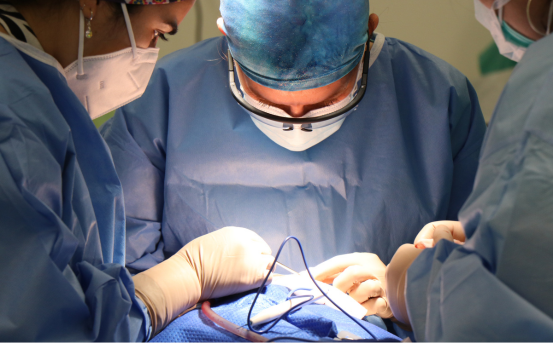Hydrocele is a common urological condition that affects men of all ages, especially newborns and older adults. Though usually painless, a hydrocele can cause discomfort, embarrassment, and inconvenience if left untreated. Thankfully, modern medical advancements offer a highly effective hydrocele surgery solution that provides long-term relief and fast recovery.
The good news is that hydrocele is easily treatable, and with the advent of modern urological procedures, patients now have access to safe, effective, and minimally invasive surgical options. These treatments not only eliminate the condition but also ensure fast recovery and a significantly reduced risk of recurrence. Whether caused by congenital factors, injury, infection, or ageing, hydrocele surgery offers a permanent solution restoring comfort, confidence, and quality of life.
What Is a Hydrocele?
A hydrocele is the accumulation of fluid in the sac surrounding the testicle (the tunica vaginalis). This condition causes swelling in the scrotum and is generally not painful. However, in some cases, especially in adults, it may lead to discomfort, heaviness, or even embarrassment due to the enlarged appearance.
- Congenital (present at birth) :- often due to an open connection between the abdomen and scrotum.
- Acquired :- can result from injury, infection, inflammation, or other medical conditions.
Causes of Hydrocele
Understanding the causes of hydrocele helps in selecting the most effective treatment method. Common causes include:
- Congenital defects in newborns (due to improper closure of the processes vaginalis)
- Trauma or injury to the scrotal area
- Infections, such as epididymitis or orchitis
- Inflammatory diseases
- Post-surgical complications
- Tumors (rarely, hydrocele can be a symptom of testicular cancer)
Symptoms of Hydrocele
While hydrocele often presents no painful symptoms, the following signs may appear:
- Swelling in one or both sides of the scrotum
- A feeling of heaviness or pressure
- Discomfort or dragging sensation
- In larger hydroceles, difficulty sitting or walking comfortably
If you notice persistent swelling or discomfort, it’s important to consult a urologist for diagnosis and treatment.
Diagnosis of Hydrocele
Diagnosing hydrocele is usually straightforward. Your doctor may perform:
- Physical examination :- to assess swelling and tenderness.
- Transillumination :- a simple test where light is passed through the scrotum to check for fluid.
- Ultrasound :- to rule out other conditions like hernia or testicular tumors.
Early diagnosis ensures quicker recovery and reduces the risk of complications.
When Is Hydrocele Surgery Needed?
In infants, a hydrocele often resolves on its own within a year. However, in adults or in persistent cases, hydrocele surgery (hydrocelectomy) becomes necessary when:
- Swelling continues for more than 6–12 months.
- There’s pain or discomfort.
- The hydrocele keeps recurring.
- There’s infection, bleeding, or suspicion of an underlying condition.
Types of Hydrocele Surgery
There are two primary types of surgical solutions for hydrocele:
- Open Hydrocelectomy :- This is the most common and reliable method. The surgeon makes an incision in the scrotum or lower abdomen to drain the fluid and remove or seal the sac.
- High success rate
- Permanent solution
- Minimal risk of recurrence
- Needle Aspiration with Sclerotherapy :- This non-surgical option involves draining the fluid using a needle, followed by injecting a sclerosing agent to prevent recurrence.
- Higher chances of recurrence
- Not a permanent cure in most cases
- Preparing for Hydrocele Surgery
Before undergoing hydrocelectomy, your surgeon will advise:
- Routine blood tests and ultrasound
- Discontinuing blood thin
- Arranging post-surgery support at home for a day or two
The procedure usually takes 30–60 minutes under local or general anesthesia.
Post-Surgery Recovery and Care
Recovery from hydrocele surgery is usually smooth, with most patients resuming normal activities within a few days.
Tips for Fast Recovery:
- Rest for 24–48 hours post-surgery.
- Wear scrotal support or tight underwear to reduce swelling.
- Apply ice packs for 10–15 minutes several times a day for the first two days.
- Avoid strenuous activities or heavy lifting for at least two weeks.
- Take prescribed antibiotics and pain relievers regularly.
- Keep the incision area clean and dry.
Follow-up :- Attend the post-operative checkup as advised to monitor healing and rule out complications.
Risks and Complications (Rare)
Although hydrocelectomy is a safe procedure, like any surgery, it carries minimal risks, such as:
- Infection at the incision site
- Bleeding or hematoma
- Swelling or fluid reaccumulation (rare)
- Reaction to anesthesia
These complications are rare and can be managed effectively with timely medical attention.
Advantages of Hydrocele Surgery
- Permanent relief from swelling and discomfort
- Boosts confidence and improves quality of life
- Minimal downtime and low recurrence rate
- Safe and effective for both young and elderly patients
Choosing the Right Surgeon and Hospital
For successful treatment, it’s crucial to select an experienced urologist and a well-equipped hospital. Look for:
- Board-certified urologists
- Hospitals with advanced OT facilities
- High patient satisfaction ratings
- Availability of insurance/cashless services
Conclusion
A hydrocele may not be life-threatening, but it can interfere with your daily life and self-esteem. The effective hydrocele surgery solution especially hydrocelectomy offers a long-term cure with minimal complications. Early diagnosis, proper surgical intervention, and good post-operative care can ensure a full recovery and a return to normal life.
If you’re experiencing scrotal swelling or discomfort, don’t delay. Consult a urologist today and explore your surgical options for hydrocele. A simple procedure can restore your comfort and peace of mind for life.























